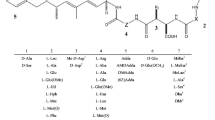Abstract
Cyanobacteria are phytoplankton prevalent in freshwater surface waters that can aggregate on the surface as blue-green “scums” or concentrate in surface water supplies as blooms. These secondary metabolites produce various harmful toxins known as cyanotoxins that impair treated water sources and pose a risk to human health and aquatic life by exploiting the food chain. They are of concern because they can produce a variety of toxins that are harmful to both human and animal health and exhibit hepatotoxic, neurotoxic, cytotoxic, and dermatotoxic behavior patterns. With regard to neurotoxicity, the brain can be a crucial target for various cyanotoxins escalating several neurodegenerative diseases. These toxins can block the voltage-gated sodium channels hindering to perform basic neurological functions. Also, the precise target/interacting proteins, the signaling cascades initiating the cell responses, and the downstream pathways of toxicity and cell injury still need to be discovered. Therefore, this chapter summarizes the detection of neurotoxicity using in vitro conditions.
Access this chapter
Tax calculation will be finalised at checkout
Purchases are for personal use only
Similar content being viewed by others
References
Br’ozman O, Kubickova B, Babica P, Laboha P (2020) Microcystin-LR does not alter cell survival and intracellular signaling in human bronchial epithelial cells. Toxins 12(3):165
Caillaud A, de la Iglesia P, Darius HT, Pauillac S, Aligizaki K, Fraga S, Chinain M, Diogène J (2010) Update on methodologies available for ciguatoxin determination: perspectives to confront the onset of ciguatera fish poisoning in Europe. Mar Drugs 8:1838
Constante JS, Al Khateeb JE, de Souza AP, Conter FU, Lehmann M, Yunes JS, Dihl RR (2022) In vitro and in silico assessment of cytotoxicity and chromosome instability induced by saxitoxin in human derived neural cell line. An Acad Bras Cienc 94:1–13
Diez-Quijada L, Puerto M, Gutiérrez-Praena D, Turkina MV, Campos A, Vasconcelos V, Cameán AM, Jos Á (2022) In vitro toxicity evaluation of cyanotoxins Cylindrospermopsin and microcystin-LR on human kidney HEK293 cells. Toxins 14(7):1–20
Florczyk M, Łakomiak A, Woźny M, Brzuzan P (2014) Neurotoxicity of cyanobacterial toxins. Environ Biotechnol 10:26–43
Kubickova B, Babica P, Hilscherova K (2019) Effects of cyanobacterial toxins on the human gastrointestinal tract and the mucosal innate immune system. Environ Sci Eur 31(1):1–27
Metcalf JS, Tischbein M, Cox PA, Stommel EW (2021) Cyanotoxins and the nervous system. Toxins 13(9):660
Sazdova I, Keremidarska-Markova M, Chichova M, Uzunov B, Nikolaev G, Mladenov M, Schubert R, Stoyneva-Gärtner M, Gagov HS (2022) Review of Cyanotoxicity studies based on cell cultures. J Toxicol 2022:5647178
Takser L, Benachour N, Husk B, Cabana H, Gris D (2016) Cyanotoxins at low doses induce apoptosis and inflammatory effects in murine brain cells: potential implications for neurodegenerative diseases. Toxicol Rep 3:180
Viallon J, Chinain M, Darius HT (2020) Revisiting the neuroblastoma cell-based assay (CBA-N2a) for the improved detection of marine toxins active on voltage gated sodium channels (VGSCs). Toxins 12(5):281
Acknowledgments
The authors are thankful to Vellore Institute of Technology, Vellore, for providing the necessary facilities to carry out this research.
Author information
Authors and Affiliations
Corresponding author
Editor information
Editors and Affiliations
Rights and permissions
Copyright information
© 2023 The Author(s), under exclusive license to Springer Nature Singapore Pte Ltd.
About this chapter
Cite this chapter
Haripriyaa, M., Suthindhiran, K. (2023). In Vitro Assay for Determining Cyanotoxin Using Cell Line Method: Neurotoxicity (Neuro-2a Neuroblastoma Cell). In: Thajuddin, N., Sankara narayanan, A., Dhanasekaran, D. (eds) Protocols for Cyanobacteria Sampling and Detection of Cyanotoxin . Springer, Singapore. https://doi.org/10.1007/978-981-99-4514-6_36
Download citation
DOI: https://doi.org/10.1007/978-981-99-4514-6_36
Published:
Publisher Name: Springer, Singapore
Print ISBN: 978-981-99-4513-9
Online ISBN: 978-981-99-4514-6
eBook Packages: Biomedical and Life SciencesBiomedical and Life Sciences (R0)




